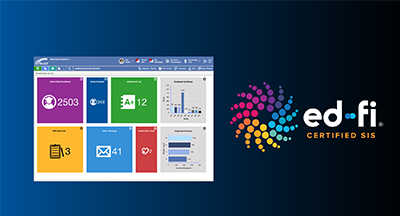Prepare for Budgeting
#Tips
Skyward Insider Team
by
Skyward Insider Team

|
Skyward Insider Team Skyward |
 |  | 
|
 |
Are you prepared to create the best possible budget for your school?
The budgeting process is complex. To better ensure that yours goes smoothly, many factors need to be addressed. In this post, we’ll take a look at 6 steps you can use to craft a successful budget and 2 Skyward tools that make the process easier.
6 Steps to a Successful Budget
Organizations like the Government Finance Officers Association (GFOA) and the Rennie Center have created useful resources to help districts craft better budgets. We've combined these resources with our own 36 years of experience working with school business leaders to break down the process into a less daunting task.1. Work together
The number one item in GFOA's best practices outline might be the most important: Establish a partnership between finance and instructional leaders. If the thought of this concept makes you laugh (or cry), I can tell you that you're not alone.The gap between these two departments can be a significant obstacle in many districts, but we've seen the same story time and again - when you work together to create a single statement of purpose, everyone will feel like they’re on the same team. The budget that's crafted together ends up being more inclusive and less controversial. Not everyone is going to get what they want, but at least they'll have a chance for their voices to be heard.
All the second-guessing that happens after a budget is adopted? You'll probably never be rid of it entirely, but a little collaboration can reduce the negative impact in a big way.
2. Use your data
Admittedly, this step might seem like a basic one, but the budget creation process is too often rooted in decades-old procedures. Perhaps more importantly, school district finance teams aren't typically trained on the best way to review or analyze data from the modern tools they are using.On the instructional side, it is so important for administrators to conduct an annual guided review of academic performance data, alongside people who have the background and training to interpret and segment that data. With this approach, you can be sure that decisions are being made based on empirical evidence, not guesswork and opinion. Which of your initiatives are showing promise, which of them need more time, and which have been proven ineffective?
Every year is a new opportunity to identify recurring expenses that may no longer be important. It's also a great time to consider tech-driven alternatives to your most gluttonous accounts. As one example, we've heard several school business leaders rave in recent years about the move to "follow me" printing and automatic deletion of old print jobs that were never pulled. Not only is this a more convenient and efficient way to operate, it also takes a chunk out of paper and toner costs, to say nothing of the reduced number of physical printers you should be able to get away with. A thorough review of account spending data can provide all the catalyst you need to move those processes forward.
3. Ask the right questions
If you're reading this, you probably have a good idea by now of where to start. Because employee compensation is such a huge chunk of school district budgets, any questions should start with hiring needs and HR changes. Then, factor in all those massive one-time projects and identify where the funds are going to come from. Those two steps are pretty fundamental, but they're also so time consuming that it can be hard to set aside time for process review.- What change in full-time equivalent positions do we anticipate for next year (hiring, layoffs, etc.)?
- When will the next set of contract negotiations take place?
- Will any benefits be added or taken away?
- Will we be starting any big projects or receiving any new grants?
- Can we save money by contracting some services like meals, building maintenance, or substitute teaching?
- Will we continue the same budgeting practice? Or, can we save money by instituting a new approach, such as zero-based, school-based, or student-based budgeting?
- Can we save money by pursuing any partnerships with local businesses, higher education institutions, or community centers?
4. Prioritize, then fund accordingly
You know that old saying "if everything's a priority, then nothing is." Different departments, buildings, and individuals are all going to have their own opinion of how your funds should be divvied up. Find a way to get the entire district leadership team in a room and draw up a concrete list of your district’s priorities. Identify any existing gaps between your goals and present conditions, and discuss ways you can build bridges. The compromise that happens in these meetings will shape not only this budget, but those in the years to come.Resource allocation is the driving force behind long-term instructional strategy and internal culture. If you find that you have money set aside for a project or product that's no longer aligned with your priorities, that might be a good candidate for a reduction or elimination of funding. Transient funds, such as grants or donations, should be poured into the improvements that have the most support from across your stakeholder groups. Yes, there will be scenarios where you'll have to say "if you want x, we'll have to cut y," but at least the process for making those decisions will be transparent.
5. Draft and communicate a plan
To people who are not closely involved in budget creation, it might seem like a "fly by the seat of your pants" process. Of course, nothing could be further from the truth. You can protect yourself from misperception by taking proactive steps in the direction of transparency and long-term planning. Consider working with your communications team to draft a 3- to 5-year perspective of how the budget will support your district's mission and how progress will be evaluated.The communications strategy will work to keep stakeholders and the general public aware of the hows and whys behind budget creation and open doors for constructive feedback. It bears reiterating that transparency must be core to the process, especially since taxpayer dollars account for a significant portion of your funding. Consider dedicating an entire area of your website to the budget, with downloads, resources, and your strategic plan. Your local media outlets will likely jump at the chance to publish an annual spotlight on the topic as well.
6. Evaluate & adjust
Because what good are the five preceding steps if all of your positive intentions end up pointing in the wrong direction? The world changes so quickly now – you almost have to treat your budget as a living document, rather than an immovable object. In the weeks and months that follow your budget approval, evaluate the items deemed to be most important. If a better way comes along, or a small course correction seems in order, adjust the budget accordingly; if you wait until next year, the payoff might not be nearly the same.Skyward’s Budgeting Tools
Skyward has several budgeting tools that can help you make better, more informed decisions, including:Salary Negotiations: This tool allows you to test hypothetical situations (hiring, firing, raises, etc.) to see the impact they would have on your budget. Once you settle on a plan, that scenario can be pushed live.
Budget Requisitions: Similar to the concept of zero-based budgeting, this feature (found in Skyward's budgeting tools) allows end users, not just administrators, to request what they need and help build the budget.
The Overall Goal
As complex as budgeting is, it is vitally important to never lose sight of the overall goal of finding the best possible alignment of resources and student success. Keep this goal in the front of your mind – or better yet, post it where everyone can see it during budget meetings and include it in public district communications. It will help guide your team through even the most challenging decisions.

|
Skyward Insider Team Skyward |
|
|

 Get started
Get started









